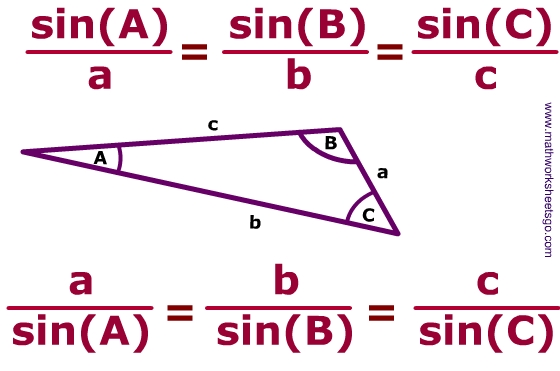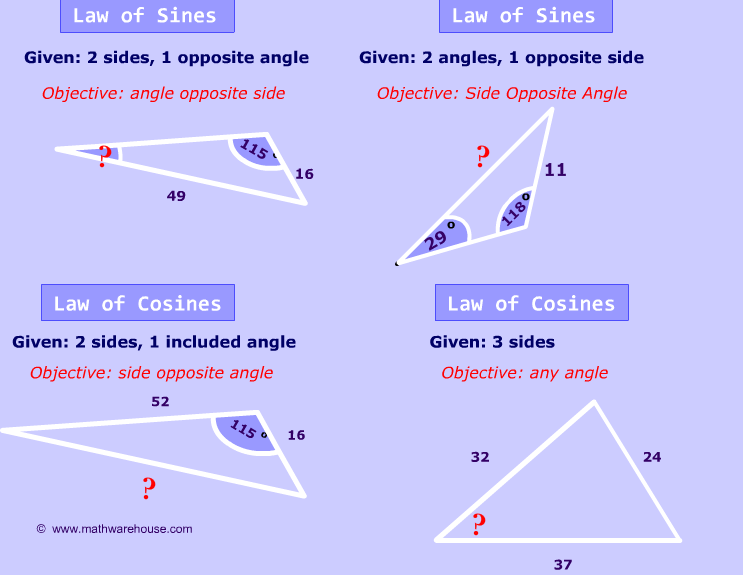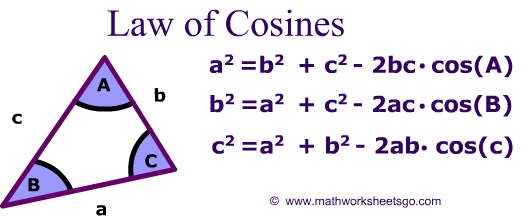Law of Sine and Cosines
When learning how to use trigonometry to solve oblique triangles, it is most important to know when and how to use these two laws. If that’s enough for you, then just skip on to the next section on area of a triangle. But if you’re interested in why they’re true, then continue on. As usual, we’ll use a standard notation for the angles and sides of a triangle.
The Law of Sines
That means the side a is opposite the angle A, the side b is opposite the angle B, and the side c is opposite the angle C.
The law of cosines
There are two other versions of the law of cosines: a2 = b2 + c2 – 2bc cos Aandb2 = a2 + c2 – 2ac cos B.Since the three verions differ only in the labelling of the triangle, it is enough to verify one just one of them. We’ll consider the version stated first.In order to see why these laws are valid, we’ll have to look at three cases. For case 1, we’ll take the angle C to be obtuse. In case 2, angle C will be a right angle. In case 3, angle C will be acute.
Math Joke of the Week:
Q: What is the definition of a polar bear?
A: A rectangular bear after a coordinate transformation
A: A rectangular bear after a coordinate transformation


